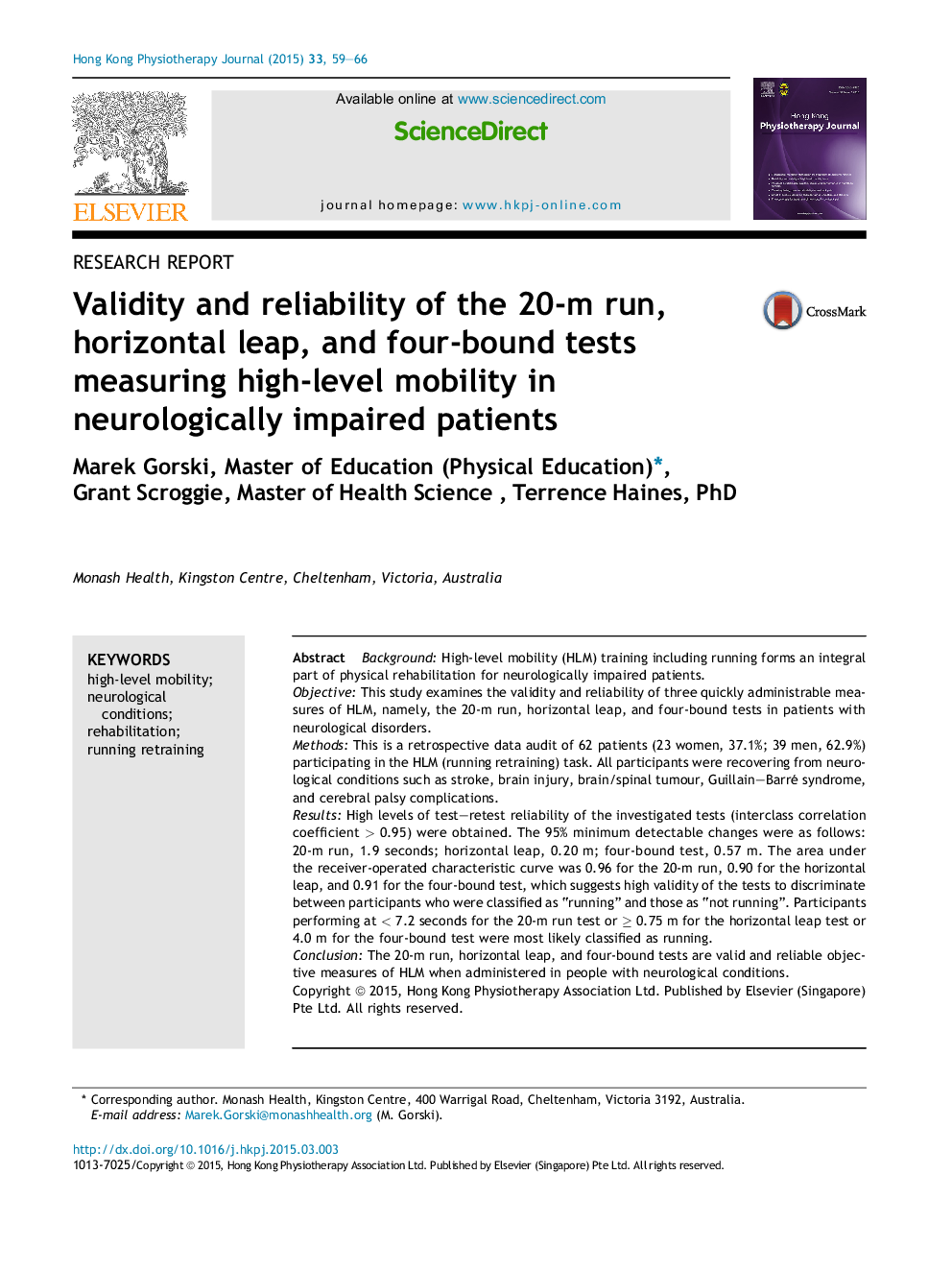| Article ID | Journal | Published Year | Pages | File Type |
|---|---|---|---|---|
| 5863484 | Hong Kong Physiotherapy Journal | 2015 | 8 Pages |
BackgroundHigh-level mobility (HLM) training including running forms an integral part of physical rehabilitation for neurologically impaired patients.ObjectiveThis study examines the validity and reliability of three quickly administrable measures of HLM, namely, the 20-m run, horizontal leap, and four-bound tests in patients with neurological disorders.MethodsThis is a retrospective data audit of 62 patients (23 women, 37.1%; 39 men, 62.9%) participating in the HLM (running retraining) task. All participants were recovering from neurological conditions such as stroke, brain injury, brain/spinal tumour, Guillain-Barré syndrome, and cerebral palsy complications.ResultsHigh levels of test-retest reliability of the investigated tests (interclass correlation coefficient > 0.95) were obtained. The 95% minimum detectable changes were as follows: 20-m run, 1.9 seconds; horizontal leap, 0.20 m; four-bound test, 0.57 m. The area under the receiver-operated characteristic curve was 0.96 for the 20-m run, 0.90 for the horizontal leap, and 0.91 for the four-bound test, which suggests high validity of the tests to discriminate between participants who were classified as “running” and those as “not running”. Participants performing at < 7.2 seconds for the 20-m run test or ⥠0.75 m for the horizontal leap test or 4.0 m for the four-bound test were most likely classified as running.ConclusionThe 20-m run, horizontal leap, and four-bound tests are valid and reliable objective measures of HLM when administered in people with neurological conditions.
